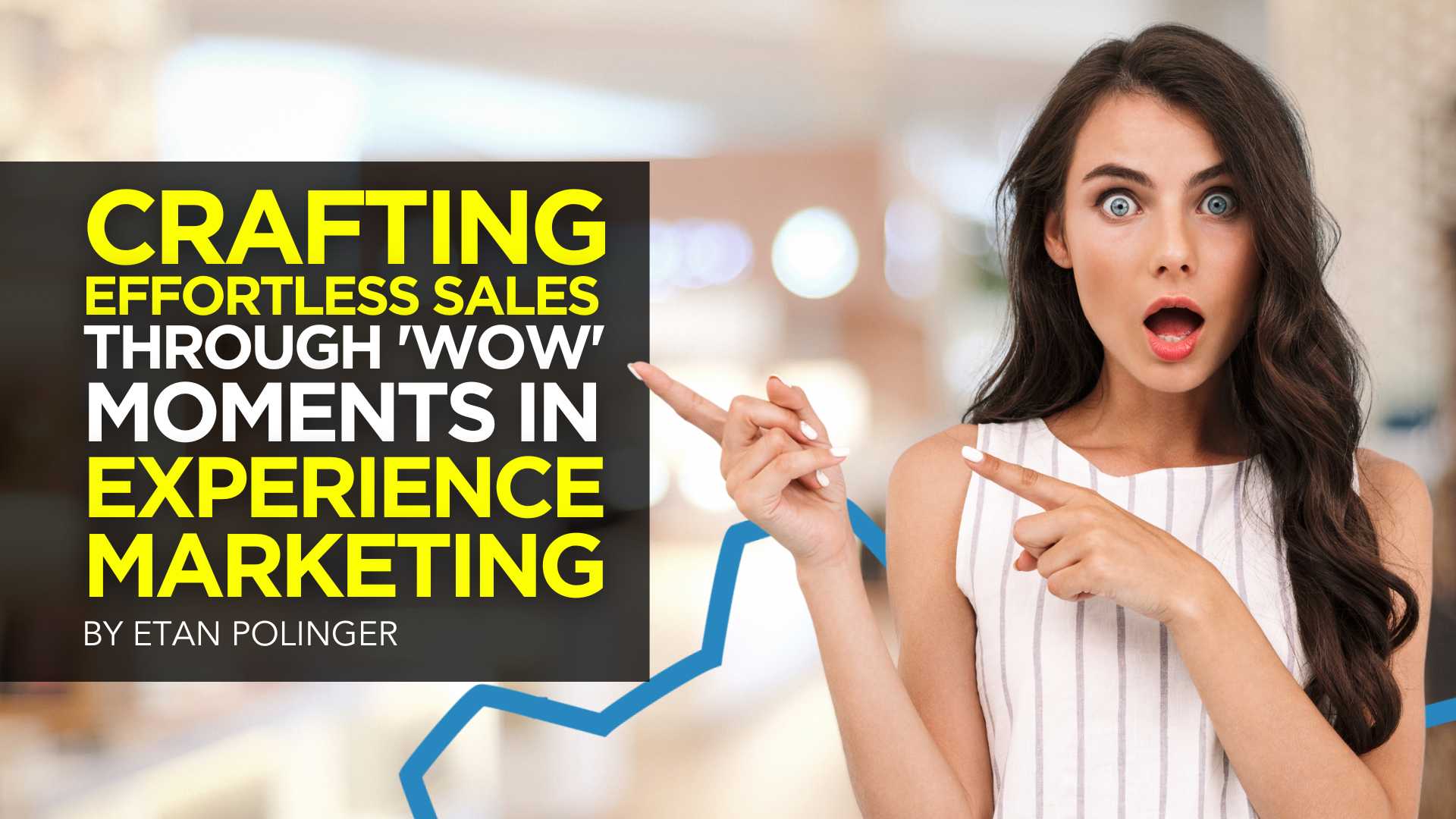MARKETING
Crafting Effortless Sales Through ‘Wow’ Moments in Experience Marketing


In an era where consumers are bombarded with endless choices and digital noise, standing out as a brand is more challenging than ever. Enter experience marketing – a strategy that transcends traditional advertising by focusing on creating immersive, memorable interactions. This innovative approach leverages the elements of surprise, delight, and reciprocity to forge strong emotional connections with customers, making the sale of your core product feel effortless. But how can businesses implement this strategy effectively? This guide delves into the art of crafting ‘wow’ moments that captivate audiences and transform customer engagement.
The Basics of Experience Marketing
Experience marketing is an evolved form of marketing that focuses on creating meaningful interactions with customers, aiming to elicit strong emotional responses that lead to brand loyalty and advocacy. Unlike conventional marketing, which often prioritizes product promotion, experience marketing centers on the customer’s holistic journey with the brand, creating a narrative that resonates on a personal level.
In today’s competitive market, experience marketing is not just beneficial; it’s essential. It differentiates your brand in a crowded marketplace, elevating your offerings beyond mere commodities to become integral parts of your customers’ lives. Through memorable experiences, you not only attract attention but also foster a community of loyal customers who are more likely to return and recommend your brand to others.
Principles of Experience Marketing
At the heart of experience marketing lie several key principles:
- Emotional Connection: Crafting campaigns that touch on human emotions, from joy to surprise, creating memorable moments that customers are eager to share.
- Customer-Centricity: Putting the customer’s needs and desires at the forefront of every marketing strategy, ensuring that each interaction adds value and enhances their experience with the brand.
- Immersive Experiences: Utilizing technology and storytelling to create immersive experiences that captivate customers, making your brand a living part of their world.
- Engagement Across Touchpoints: Ensuring consistent, engaging experiences across all customer touchpoints, from digital platforms to physical stores.
Understanding Your Audience
Before diving into the intricacies of crafting ‘wow’ moments, it’s crucial to understand who you’re creating these moments for. Identifying your audience’s pain points and desires is the first step in tailoring experiences that truly resonate.


This involves deep market research, customer interviews, and leveraging data analytics to paint a comprehensive picture of your target demographic. By understanding the journey your customers are on, you can design touchpoints that not only meet but exceed their expectations.
- Identifying Pain Points and Desires: Use surveys, social media listening, and customer feedback to gather insights. What frustrates your customers about your industry? What do they wish for more than anything else? These insights will guide your efforts to create experiences that truly resonate.
- Mapping the Customer Journey: Visualize every step a customer takes from discovering your brand to making a purchase and beyond. This map will highlight critical touchpoints where you can introduce ‘wow’ moments that transform the customer experience.
Developing Your Experience Marketing Strategy
With a clear understanding of your audience, it’s time to build the framework of your experience marketing strategy. This involves setting clear objectives, identifying key customer touchpoints, and conceptualizing the experiences you want to create.
- Setting Objectives: Define what you aim to achieve with your experience marketing efforts. Whether it’s increasing brand awareness, boosting sales, or improving customer retention, having clear goals will shape your approach and help measure success.
- Strategic Touchpoint Identification: List all the potential touchpoints where customers interact with your brand, from social media to in-store experiences. Consider every stage of the customer journey and look for opportunities to enhance these interactions.
Enhancing Customer Experiences with Surprise, Delight, and Reciprocity
This section is where the magic happens. By integrating the elements of surprise, delight, and reciprocity, you can elevate ordinary customer interactions into unforgettable experiences.


- Incorporating Surprise and Delight: Go beyond what’s expected. This could be as simple as a personalized thank-you note with each purchase or as elaborate as a surprise gift for loyal customers. The key is to create moments that feel special and unexpected.
- Applying the Principle of Reciprocity: When customers receive something of value, they’re naturally inclined to give something back. This can be leveraged by offering helpful resources, exceptional service, or customer appreciation events. Such gestures encourage loyalty and positive word-of-mouth.
- Examples and Case Studies: Highlight real-world examples of brands that have successfully implemented these strategies. Analyze what they did, why it worked, and how it impacted their relationship with customers.
Best Practices for Experience Marketing
To ensure your experience marketing strategy is as effective as possible, it’s important to adhere to some best practices.
- Personalization at Scale: Leverage data and technology to personalize experiences without losing efficiency. Tailored experiences make customers feel valued and understood.
- Using Technology to Enhance Experiences: From augmented reality (AR) to mobile apps, technology offers myriad ways to create immersive experiences that surprise and engage customers.
- Measuring Success: Utilize analytics tools to track the success of your experience marketing initiatives. Key performance indicators (KPIs) could include engagement rates, conversion rates, and customer satisfaction scores.
Section 5: Overcoming Common Challenges
Even the best-laid plans can encounter obstacles. This section addresses common challenges in experience marketing and how to overcome them.


- Budget Constraints: Learn how to create impactful experiences without breaking the bank. It’s about creativity, not just expenditure.
- Maintaining Consistency: Ensuring a consistent brand experience across all touchpoints can be daunting. Develop a comprehensive brand guideline and train your team accordingly.
- Staying Ahead of Trends: The digital landscape is ever-changing. Stay informed about the latest trends in experience marketing and be ready to adapt your strategy as necessary.
The Path to Effortless Sales
By creating memorable experiences that resonate on a personal level, you make the path to purchase not just easy but natural. When customers feel connected to your brand, appreciated, and valued, making a sale becomes a byproduct of your relationship with them. Experience marketing, when done right, transforms transactions into interactions, customers into advocates, and products into passions.
Now is the time to reassess your marketing strategy. Are you just selling a product, or are you providing an unforgettable experience? Dive into the world of experience marketing and start creating those ‘wow’ moments that will not only distinguish your brand but also make sales feel effortless.


















